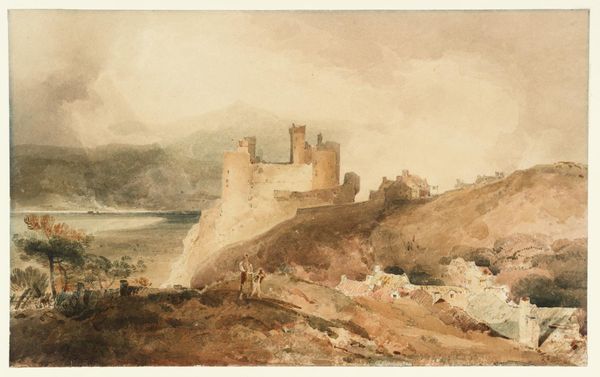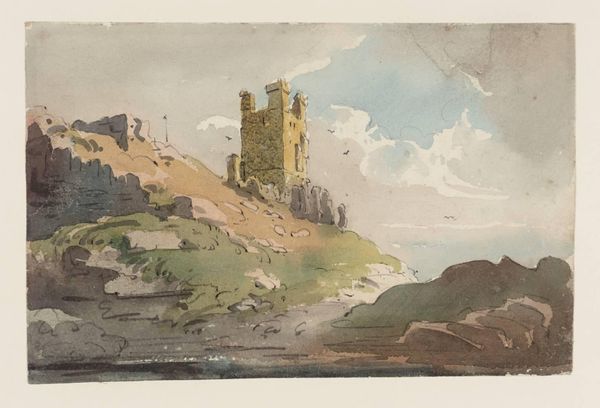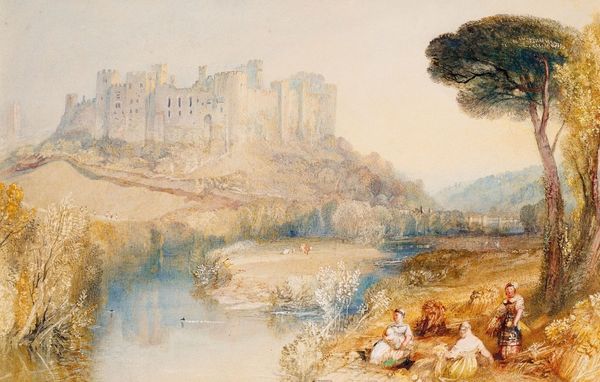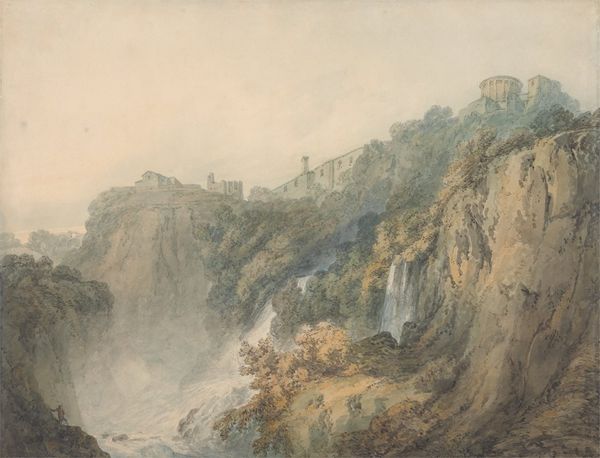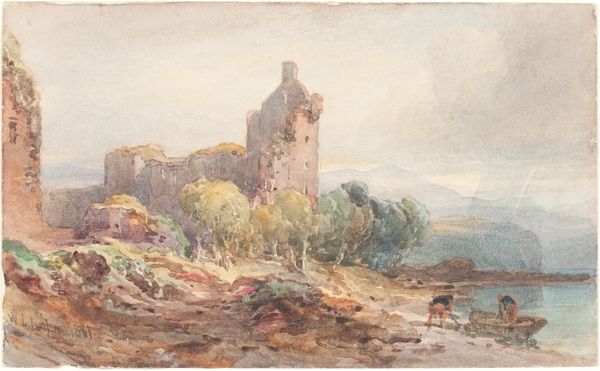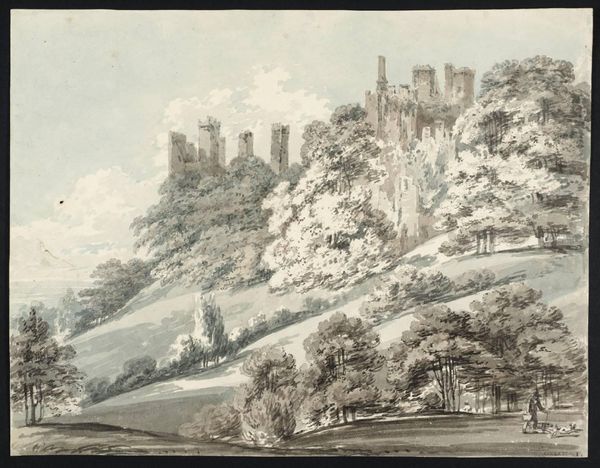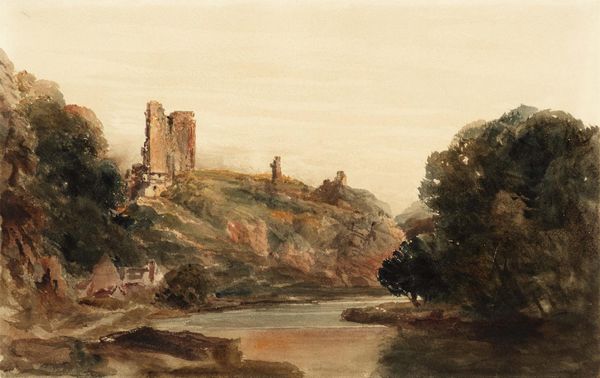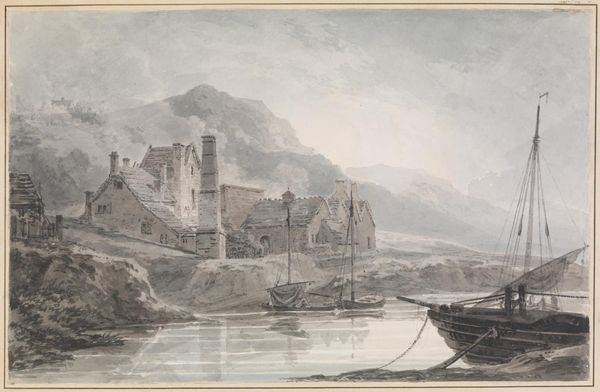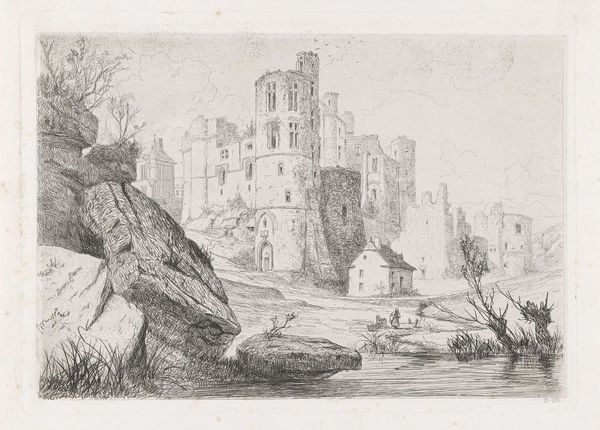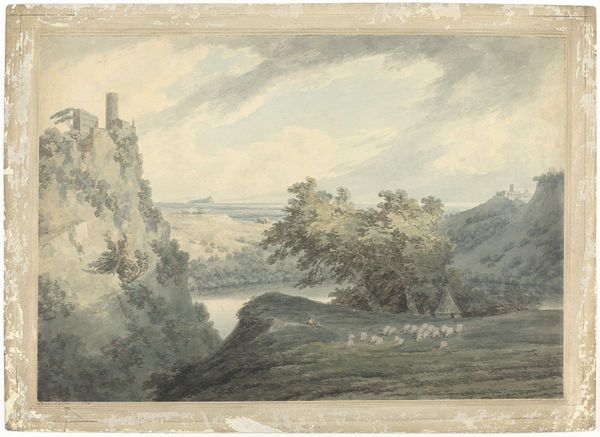
Dimensions: support: 337 x 514 mm
Copyright: CC-BY-NC-ND 4.0 DEED, Photo: Tate
Curator: This is William Callow’s watercolour, "Richmond Castle, Yorkshire," currently held at the Tate. Editor: It's…evocative. The muted tones create a sense of romantic decay, almost like a dreamscape. Curator: Callow captures the sublime quality of the ruined castle perched above the town, juxtaposed with the ruggedness of the natural landscape. Note how the castle's verticality opposes the horizontality of the river and bridge. Editor: Yes, the composition itself tells a story of man versus nature, past versus present. The light seems to drain the color as it emphasizes the solidity of the castle against the soft, ever-changing sky and water. Curator: Precisely. It's a masterful balance between architectural detail and atmospheric effect, using the watercolor medium to its fullest potential. Editor: It makes me wonder about what stories the ruins hold and how the river has seen it all. Curator: Indeed. Callow invites us to ponder on the transient nature of time and legacy.
Comments
tate 7 months ago
⋮
http://www.tate.org.uk/art/artworks/callow-richmond-castle-yorkshire-n02435
Join the conversation
Join millions of artists and users on Artera today and experience the ultimate creative platform.
tate 7 months ago
⋮
Callow trained as an engraver and moved to Paris in 1829, where he began to exhibit at the Salon and eventually established a successful practice as a drawing-master to the French nobility. Callow owned copies of Turner’s England and Wales series which had always been an inspiration to him. In 1841 he left Paris and returned to London, starting afresh and practically unknown. This watercolour of Richmond Castle in Yorkshire was painted on a trip taken in 1843 from Glasgow to London, travelling by coach and stopping at principal towns along the way. Gallery label, September 2004

